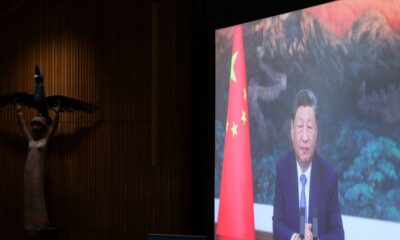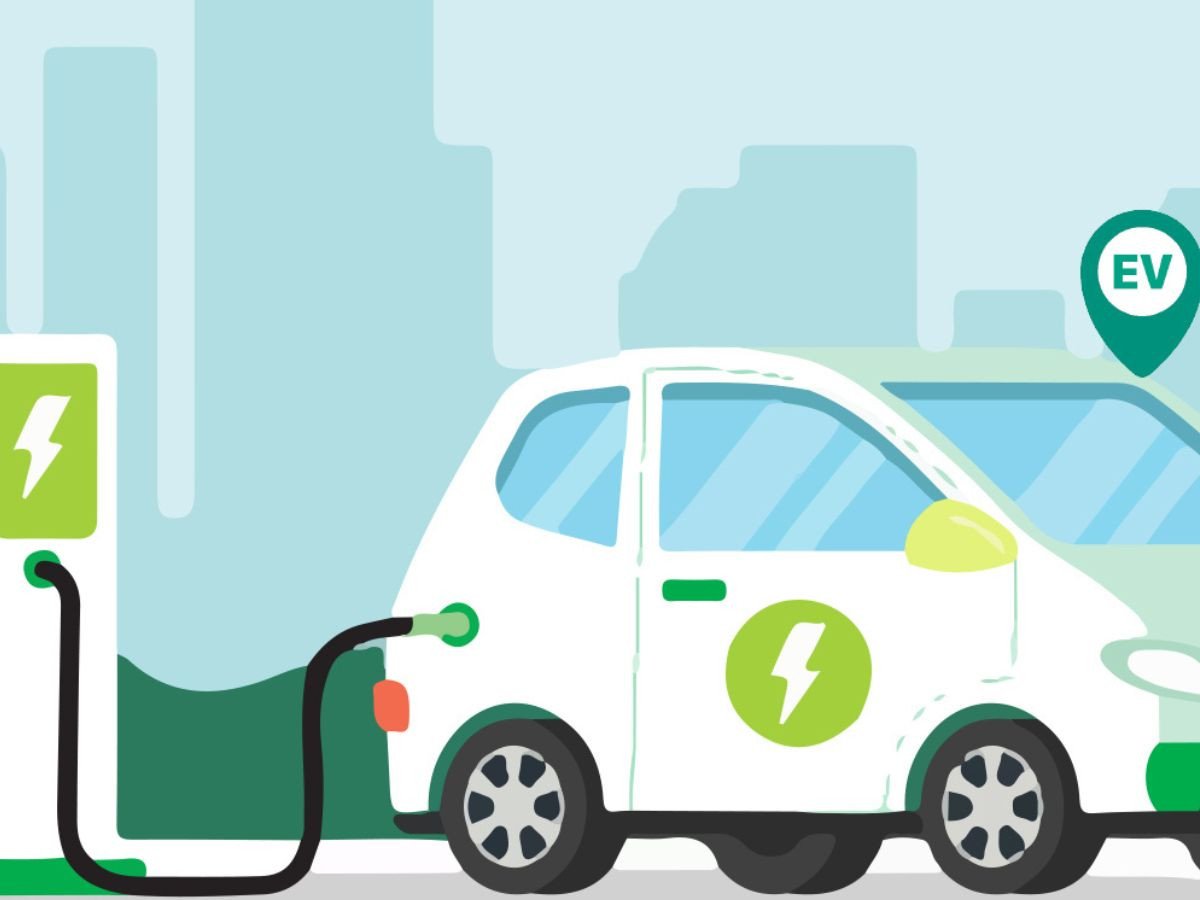Business
China lifts rare earths export curbs: India’s electronics sector could benefit from relaxations – what industry experts have to say – Times of India

The electronics sector, India’s major Make-in-India achievement, could gain lasting global advantages due to a surprise backing from its strategic competitor, China.The Chinese government’s decision to relax restrictions on rare earth metals and critical mineral exports addresses a significant supply constraint for electronic products, including electric vehicles, computers, mobile phones, gaming devices and display-based instruments, as industry leaders told Economic Times.The removal of import restrictions is expected to create additional prospects for advanced manufacturing and research activities in India, whilst helping to maintain stable costs.Also read: India to ease China business visa process- Top executives’ applications from Vivo, Xiaomi and more likely to be approved; move amid improving tiesRare earth metals are essential components in manufacturing magnets for electronics, EVs, robotics and emerging technologies. Previously, India’s electronics supply chain faced difficulties, with Foxconn’s Hyderabad facility experiencing supply constraints for Apple AirPods production following initial restrictions.Subhrakant Panda, managing director, Indian Metals and Ferro Alloys, said, “Industry will be relieved by China lifting its export curbs on rare earth elements and critical minerals. Moreover, it is a positive development which will aid in the normalisation of ties that are in mutual interest.”The recently improving relations between India and China will enhance Beijing’s industrial and diplomatic position, according to Jason Oxman, President and CEO of Washington DC-based Information Technology Industry Council (ITI), in his statement to ET. “Whenever the US vacates policy space, China wins. Where Washington pulls back from trade agreements or imposes tariffs, Beijing steps in with offers of tariff-free trade. That is a long-term risk to U.S. competitiveness,” he said.Indian electronics producers welcomed the announcement. Rajoo Goel, secretary general, Electronic Industries Association of India (ELCINA), told ET, “The bigger hit was for Indian electronics companies in wearables and electric vehicles (EVs), which rely on rare earth magnets in larger quantities. We heard from companies such as Brandworks and boAt which faced difficulties due to shortages. EV makers were also impacted because rare earths are critical for motors and battery systems. However, I would add that while production slowed, no company had to completely shut down operations.”This brief disruption points to the necessity of self-sufficiency and strategic planning, he noted. “Unlike China, India hasn’t sufficiently invested in securing rare earth supply chains despite a decade of efforts to grow its electronics ecosystem. We need to anticipate such risks, prepare alternatives, and allocate resources for domestic exploration, research, and processing of these critical minerals,” he said.Experts indicated that the disruption revealed India’s susceptibility to global fluctuations in critical minerals and emphasised the urgency of establishing its own rare earth infrastructure.Abhishek Bhatia, managing director and partner, BCG India, told ET, “Curbs on export on the select rare earth elements and related magnets from China to India presented significant production risks to industries like automotive, consumer electronics, and wind power, and any change in the current status will be a welcome relief to the industry.”China dominates the global rare earth value chain from extraction to oxide processing and downstream industries, representing over 90% of worldwide production across various applications including magnets, ceramics, catalysts and alloys, Bhatia elaborated. This is where India should actively be looking to build self-reliance through strategic acquisitions of assets globally via mechanisms like KABIL as well as encouraging the private sector to invest across the exploration, mining and downstream value chain,” Bhatia said.KABIL, or Khanij Bidesh India Limited, combines three Indian public sector enterprises: NALCO, HCL, and MECL. It aims to ensure critical and strategic mineral supplies through overseas resource identification, exploration and acquisition. KABIL currently sources minerals including lithium and cobalt from Argentina and Australia.Industry experts suggest that consistent supply will enable Indian manufacturers to increase production, maintain stable raw material costs and plan long-term research investments.Discussing China’s policy change implications, T Senthil Siva Subramanian, head, Institute Industry Interface Programme, Hindustan College of Science and Technology (Sharda Group of Institutions), Mathura, told ET, “Lifting export curbs on rare earth metals, particularly Yttrium, will catalyse growth in India’s opto-electronics ecosystem. As the global leader in yttrium production, China’s policy shift opens new avenues and enormous opportunities for India to accelerate innovation in advanced plasmonic sensing technologies.“He also detailed Yttrium’s hydrogen-sensing capabilities for plasmonic hydrogen gas sensors, noting that with India’s progress in indigenous chip design and fabrication, Yttrium-based Sensor Systems on Chip (YSoC) could represent a significant advancement.These sensors will support defence, space exploration and green energy initiatives, including the National Green Hydrogen Mission, Indian Semiconductor Mission, National Quantum Mission and National Manufacturing Mission. The availability of rare earths will also enable Indian MSMEs to conduct research, innovate and produce rare earth-based opto-electronic chips, advancing domestic capabilities.
Business
Private sector data: Over 2 lakh private companies closed in 5 years; govt flags monitoring for suspicious cases – The Times of India

NEW DELHI: The government on Monday said that over the past five years, more than two lakh private companies have been closed in India.According to data provided by Minister of State for Corporate Affairs Harsh Malhotra in a written reply to the Lok Sabha, a total of 2,04,268 private companies were shut down between 2020-21 and 2024-25 due to amalgamation, conversion, dissolution or being struck off from official records under the Companies Act, 2013.Regarding the rehabilitation of employees from these closed companies, the minister said there is currently no proposal before the government, as reported by PTI. In the same period, 1,85,350 companies were officially removed from government records, including 8,648 entities struck off till July 16 this fiscal year. Companies can be removed from records if they are inactive for long periods or voluntarily after fulfilling regulatory requirements.On queries about shell companies and their potential use in money laundering, Malhotra highlighted that the term “shell company” is not defined under the Companies Act, 2013. However, he added that whenever suspicious instances are reported, they are shared with other government agencies such as the Enforcement Directorate and the Income Tax Department for monitoring.A major push to remove inactive companies took place in 2022-23, when 82,125 companies were struck off during a strike-off drive by the corporate affairs ministry.The minister also highlighted the government’s broader policy to simplify and rationalize the tax system. “It is the stated policy of the government to gradually phase out exemptions and deductions while rationalising tax rates to create a simple, transparent, and equitable tax regime,” he said. He added that several reforms have been undertaken to promote investment and ease of doing business, including substantial reductions in corporate tax rates for existing and new domestic companies.
Business
Pakistan’s Textile Exports Reach Historic High in FY2025-26 – SUCH TV

Pakistan’s textile exports surged to $6.4 billion during the first four months of the 2025-26 fiscal year, marking the highest trade volume for the sector in this period.
According to the Pakistan Bureau of Statistics (PBS), value-added textile sectors were key contributors to the growth.
Knitwear exports reached $1.9 billion, while ready-made garments contributed $1.4 billion.
Significant increases were observed across several commodities: cotton yarn exports rose 7.74% to $238.9 million, and raw cotton exports jumped 100%, reaching $2.6 million from zero exports the previous year.
Other notable gains included tents, canvas, and tarpaulins, up 32.34% to $53.48 million, while ready-made garments increased 5.11% to $1.43 billion.
Exports of made-up textile articles, excluding towels and bedwear, rose 4.17%, totaling $274.75 million.
The report also mentioned that the growth in textile exports is a result of improved global demand and stability in the value of the Pakistani rupee.
Business
Peel Hunt cheers ‘positive steps’ in Budget to boost London market and investing

UK investment bank Peel Hunt has given some support to under-pressure Chancellor Rachel Reeves over last week’s Budget as it said efforts to boost the London market and invest in UK companies were “positive steps”.
Peel Hunt welcomed moves announced in the Budget, such as the stamp duty exemption for shares bought in newly listed firms on the London market and changes to Isa investing.
It comes as Ms Reeves has been forced to defend herself against claims she misled voters by talking up the scale of the fiscal challenge in the run-up to last week’s Budget, in which she announced £26 billion worth of tax rises.
Peel Hunt said: “Following a prolonged period of pre-Budget speculation, businesses and investors now have greater clarity from which they can start to plan.
“The key measures were generally well received by markets, particularly the creation of additional headroom against the Chancellor’s fiscal rules.
“Initiatives such as a stamp duty holiday on initial public offerings (IPOs) and adjustments to the Isa framework are intended to support UK capital markets and encourage investment in British companies.
“These developments, alongside the Entrepreneurship in the UK paper published simultaneously, represent positive steps toward enhancing the UK’s attractiveness for growth businesses and long-term investors.”
Ms Reeves last week announced a three-year stamp duty holiday on shares bought in new UK flotations as part of a raft of measures to boost investment in UK shares.
She also unveiled a change to the individual savings account (Isa) limit that lowers the cash element to £12,000 with the remaining £8,000 now redirected into stocks and shares.
But the Chancellor also revealed an unexpected increase in dividend tax, rising by 2% for basic and higher rate taxpayers next year, which experts have warned “undermines the drive to increase investing in Britain”.
Peel Hunt said the London IPO market had begun to revive in the autumn, although listings activity remained low during its first half to the end of September.
Firms that have listed in London over recent months include The Beauty Tech Group, small business lender Shawbrook and tinned tuna firm Princes.
Peel Hunt added that deal activity had “continued at pace” throughout its first half, with 60 transactions announced across the market during that time and 10 active bids for FTSE 350 companies, as at the end of September.
Half-year results for Peel Hunt showed pre-tax profits jumped to £11.5 million in the six months to September 30, up from £1.2 million a year earlier, as revenues lifted 38.3%.
Peel Hunt said its workforce has been cut by nearly 10% since the end of March under an ongoing savings drive, with full-year underlying fixed costs down by around £5 million.
Steven Fine, chief executive of Peel Hunt, said: “The second half has started strongly, with the group continuing to play leading roles across both mergers and acquisitions and equity capital markets mandates.”
-

 Sports1 week ago
Sports1 week agoWATCH: Ronaldo scores spectacular bicycle kick
-

 Entertainment1 week ago
Entertainment1 week agoWelcome to Derry’ episode 5 delivers shocking twist
-

 Politics1 week ago
Politics1 week agoWashington and Kyiv Stress Any Peace Deal Must Fully Respect Ukraine’s Sovereignty
-

 Business1 week ago
Business1 week agoKey economic data and trends that will shape Rachel Reeves’ Budget
-

 Politics1 week ago
Politics1 week ago53,000 Sikhs vote in Ottawa Khalistan Referendum amid Carney-Modi trade talks scrutiny
-

 Tech6 days ago
Tech6 days agoWake Up—the Best Black Friday Mattress Sales Are Here
-

 Fashion1 week ago
Fashion1 week agoCanada’s Lululemon unveils team Canada kit for Milano Cortina 2026
-

 Tech23 hours ago
Tech23 hours agoGet Your Steps In From Your Home Office With This Walking Pad—On Sale This Week














